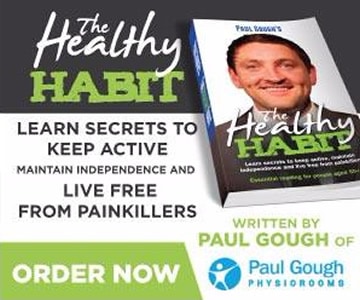On assessment it was clear that his shoulder blade wasn’t doing its job exactly how it should be…
…It was not moving properly as he raised his arm up above his head therefore whenever he went for an over-head shot the space in the joint was too narrow causing impingement and pain.
The reason for this unnatural movement, as it is with most clients was due to two of the many muscles that attach to the shoulder blade not working as they should. These two muscles act to lift the top bone that makes up the shoulder joint to increase the space between the bones during overhead activities.
With the bone not lifting during over-head motions it meant more pressure was placed upon the rotator cuff muscles causing impingement.
A few simple exercises to activate these muscles along with manual physiotherapy treatment helped this client return to tennis pain free.
In order to determine whether a client has a problem with the function of their shoulder blade the physiotherapist will carry out a thorough assessment.
Normally an issue with the activation of these muscles causes the shoulder blade to sit in an asymmetrical position or even wing or tilt slightly.
From past experience a lot of the clients I see were already aware of the fact that their shoulder blade sticks out on one Side more than the other, normally due to a partner pointing it out!.
In order for this not to become a significant problem in the future it is very important to consult your physiotherapist who following an assessment can give specific advice and possibly treatment.
One simple exercise that you can perform at home to get the muscles that have a big influence on the shoulder blade movement functioning correctly is as follows:
* Lying on your front with your hands down by your side, slowly try and raise both shoulders off the floor lifting your arms off too so that your hands are only about an inch off the floor, whilst in this position try to reach with both arms gently down to your heels. Hold this position for 5 seconds and then repeat 10x reps, 3x sets, 3x per day.
Hope this advice helps anyone who is, or someone you may know that is suffering from shoulder pain or impingement.
Article written by Specialist Physio Jonny Corner.
For more information on Neck and shoulder pain and how to ease pain from it, click this link and request your free self help report: www.paulgoughphysio.com/neck-shoulder-pain


